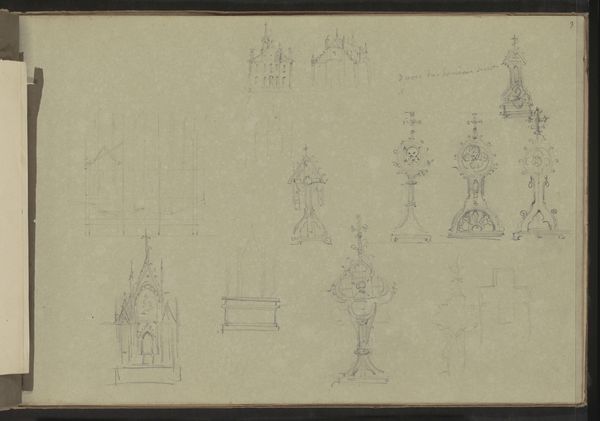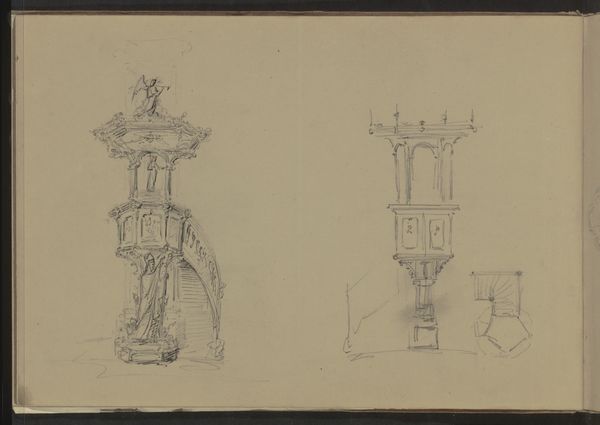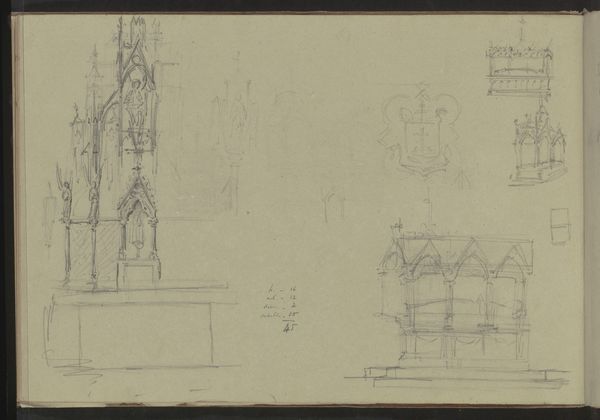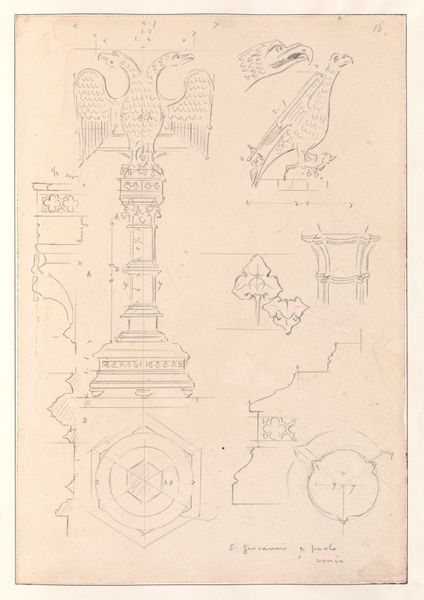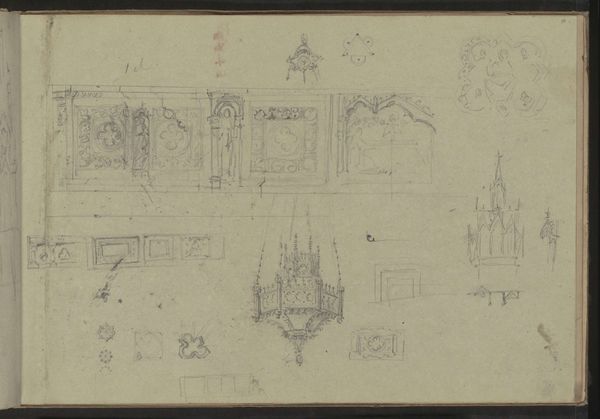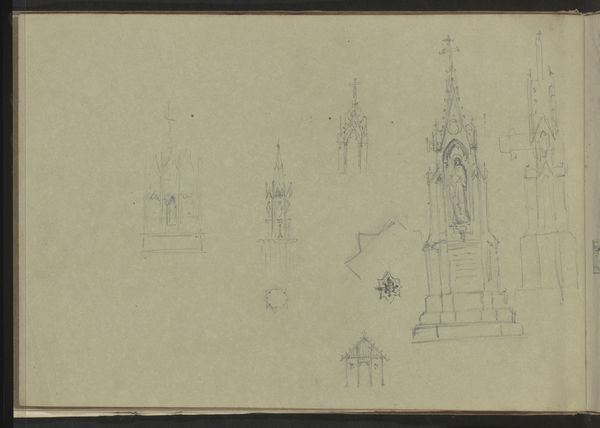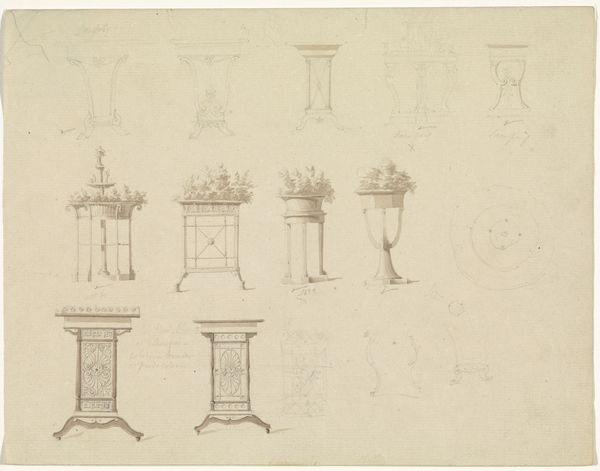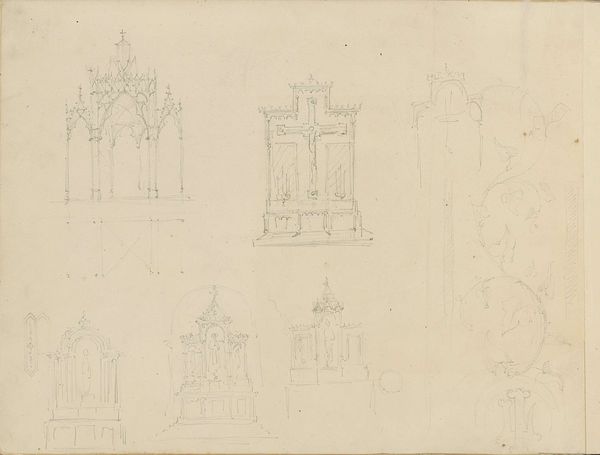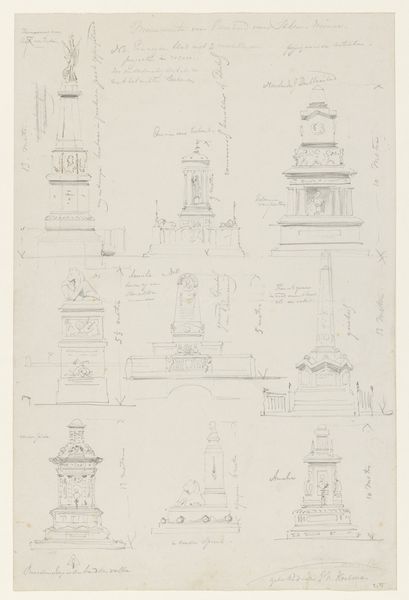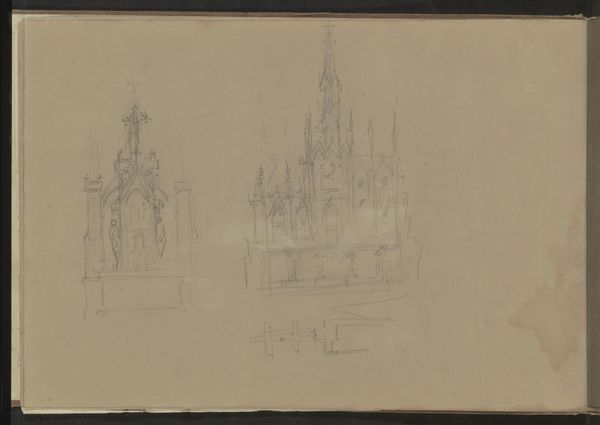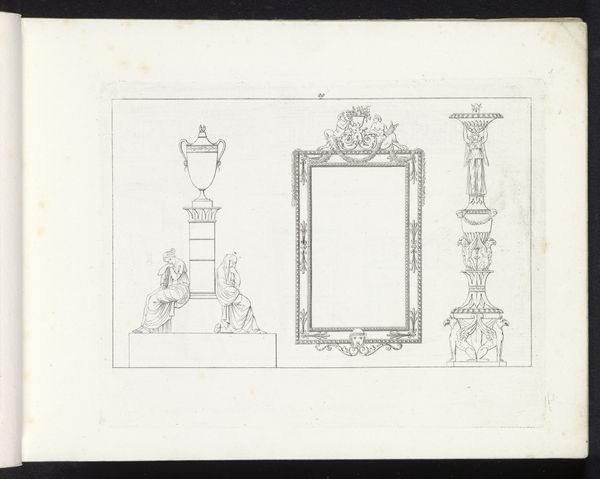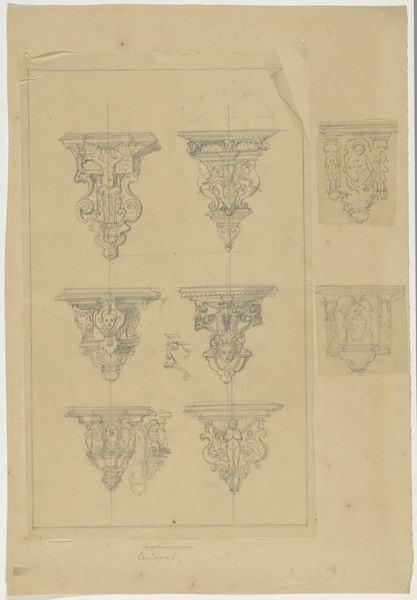
drawing, paper, pencil, architecture
#
drawing
#
aged paper
#
toned paper
#
quirky sketch
#
sketch book
#
paper
#
personal sketchbook
#
idea generation sketch
#
sketchwork
#
geometric
#
sketch
#
pencil
#
sketchbook drawing
#
storyboard and sketchbook work
#
academic-art
#
sketchbook art
#
architecture
Copyright: Rijks Museum: Open Domain
Editor: We're looking at "Altaren en kapitelen met bladmotieven," a drawing by Pierre Joseph Hubert Cuypers, dating from 1837 to 1921. It's rendered in pencil on paper. It looks like a page from a sketchbook, filled with architectural details. What stands out to me is how academic and precise it is, but still feels like a personal exploration. What can you tell me about it? Curator: Well, consider Cuypers’ role in the late 19th-century Gothic Revival movement. These aren't just sketches; they are documents reflecting a widespread fascination with medieval aesthetics and their place within burgeoning nationalism. Look at how he meticulously renders the details – the leaf motifs, the geometric structures. How might this kind of architectural drawing have influenced the creation of public identity during a time of significant social change? Editor: So it’s not just about the aesthetic; it’s also about building a national identity through architectural styles? I see what you mean. So, were these sketches intended for personal use, or were they meant for a wider audience, influencing architectural designs of the period? Curator: A good question. Sketches like these would often serve multiple purposes. Initially, they would be for the architect's exploration and refinement of ideas. However, they would also be shared within workshops, disseminated through publications, and ultimately impact the built environment, shaping public spaces and collective memory. Consider the power of architectural imagery in reinforcing dominant cultural narratives and religious beliefs of that era. Editor: That's fascinating. It changes how I see these drawings. They become less about the individual artist and more about the social forces at play in architecture. Curator: Precisely. And examining Cuypers’ work, knowing how deeply involved he was in designing churches and public buildings, these seemingly simple sketches acquire a new layer of historical significance, connecting to debates about faith, nationhood, and artistic authority. It shows us the interconnectedness between artistic vision and broader cultural dialogues. Editor: I see it now. This isn't just a sketchbook; it’s a visual record of a specific moment in architectural and cultural history. Thanks for your insight! Curator: My pleasure. Looking closely at artworks like this helps us understand how visual culture shapes, and is shaped by, its social environment.
Comments
No comments
Be the first to comment and join the conversation on the ultimate creative platform.
